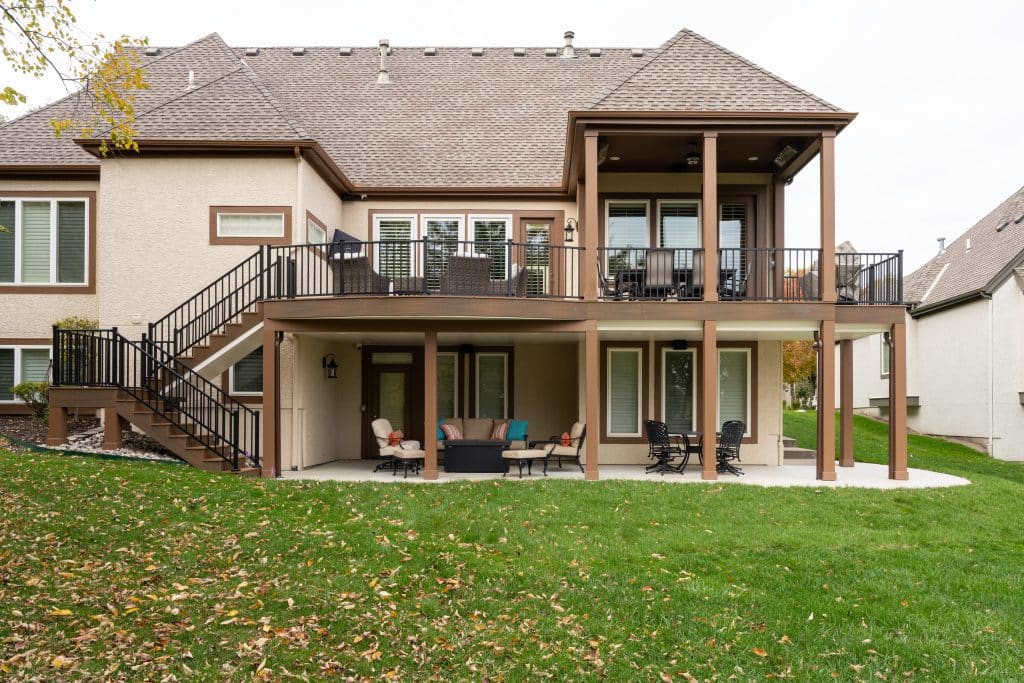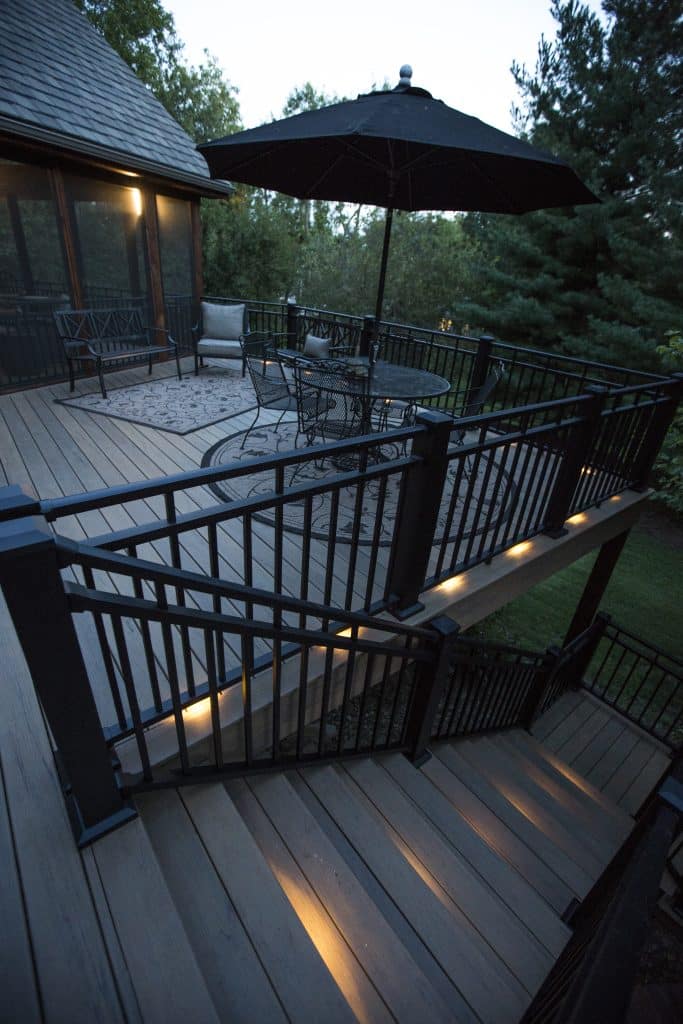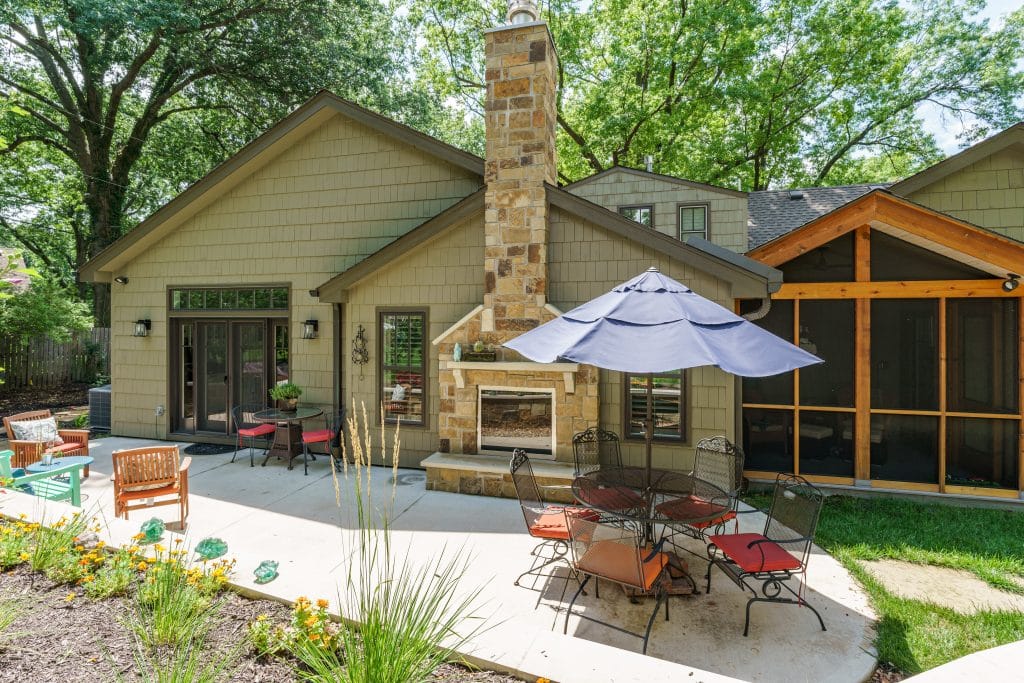On our latest podcast Donna Kirsopp, CKBR joined us to discuss how she designs outdoor spaces. Donna has designed many amazing outdoor spaces through her years and shares great insight!
Does it seem to be a more common request than it used to be?
We’re getting a lot more of that. I think people are not just thinking about living in their houses, but they’re thinking of living around them. Everybody talks about COVID and how COVID kind of got us when we were stuck in our houses, we started really developing outdoor areas. I am a big gardener, have been for a long time and I love the outdoor spaces. I enjoy doing it because it could be a little bit more organic.
How is an interior different than an exterior? Is it the materials?
Materials a little bit, but you are confined you when you’re doing interior remodeling for the most part unless it’s an addition. It’s a house and it’s a square and it’s a block. But when you go outside, a deck doesn’t have to be square. It can be shaped; it can be angled. A patio can be curved and you could have curved walls. Let’s say you’re talking about an outdoor kitchen, there are certain things that cause you to make things at angles, for example, a range top or a grill. Yes, you’ve got to have a straight piece that goes with it. After that, there are no rules. When you start thinking of the materials of stone and pavers, they come square, but they don’t really come square. They come in all kinds of different shapes.
I’m working on a fire pit right now that is the coolest thing. According to the stone guy, the coolest thing he’s ever done is a big compliment. So, we started out with a shape, it has no relationship to that shape whatsoever. I mean, it has things sticking out and yes, it has some square stones, but we’re going to kind of chunk them across and add some pebbles to it. It gives me the freedom to offer these things up to the client too so that they’re not thinking angles and squares and things like that.
How do you approach it? Let’s say I’m coming to you and I need something. I have a pad of grass at this point. How do you start?
I start with what the function is. What is it that you want to do here? A lot of conversation goes around. It is Kansas City, we have bugs, how are we going to address that? Is it a screen porch? Is it a two-season three-season, or four-season? Not screened at all. Is it convertible for the winter? Does it even have a roof or is it just more outdoor space? I mean, we can all deal with bugs and candles and, smoke bombs and mosquito Joe Midwest. I just think it’s a whole other space, I try to bring some things into it. Fencing, railings, arbors. There are these really cool metal panels you can use as privacy screens. So, you have some shield from your neighbor. There are a lot of things to consider there. I start with what you want to do out there.
Clients may say we love to have our family over. We want to grill. What else do you want to do out there? Are you going to sit out there? Are you going to have music out there? What’s the garden space? Do you want to walk through there? I love it!
How do you design with correlation to the existing structure?
I don’t think it has to. I did a screen porch deck, a typical Leewood ranch, straight. We kicked off the screen porch at an angle to the house and then the deck went at another angle to the screen porch. So, you took the back of this house, which was just flat and plain and all of a sudden you have projections that come out and roof lines that tie back in and steps going down this side. Sometimes it gets a little scary as the designer because I can do whatever I want.
I worked with a client recently where he had a lower-level patio and an upper-level patio, and I worked with a landscape architect who designed a rock wall fountain that comes down to a pond. Now you have this water feature that’s coming from the top to the bottom. The stone mason and I really had to think through positioning. We didn’t want the water to hit a rock and then come splashing down 10 feet.
Sometimes I just think about this stuff as things come to me. What about? What if we do? That’s why we spend the time upfront in design. You can’t design everything down to the nitty gritty ahead of time, but you have your general concept. Then if something comes up you can say, “Hey, this is an opportunity.”
How about materials? Are there some that you lean towards for exteriors?
For decking materials, the composite materials are great. They have come a long way. I think everybody still envisions dry-looking gray stuff. It’s come a long way. Now they have a Brazilian Walnut. A plank of this has the graining going through it as if it were a real piece of wood. They come with a heavier texture, a smoother texture. They come in a lot of different colors. I love to mix colors on a deck and not just have it all square and straight. Like on an edge, for example, I try to cap it in a different color. Those edges also can be a visual cue when you’re going down steps. And I’m going to step from this color indicating there’s a step.
Costs are similar to Cedar but Cedar has extra maintenance. You have to power wash cedar. And everybody you talk to they either wash religiously or they finally give up and say, I’m done.
I’ve done several in a wood product called Ipe. Ipe is absolutely gorgeous. It’s actually similar to mahogany. It has that really fine check grain, but it’ll wear like iron. You still have that power washing and maintenance. It does gray out over time.
Talk a little bit more about lighting.
When I am outside, I want to be able to see what’s going on around me. I don’t want a spotlight. I don’t want a goose-neck light hanging off the house or the SC outside the back door. I like low lighting that is on the ground that will wash the floor. That’s really all you need. Unless you’re doing something. You need to see where you’re walking. We want you to see your plants—things like that in pots.
Then there’s lighting for safety. I like lighting on railings or posts, something that’s a footlight, again is low lighting. Then I like backdrop lighting. This gets into more like landscape lighting. But I, I try to introduce that as part of the whole thing.
What about sconces?
They have to be appropriate. The house sconces indicate where the door is. In an outdoor kitchen, it gets a little tricky because you need to see what you’re doing on the grill. I’ve done things where I’ve had a post and a little arbor around the whole island, so now you have tiny little bullet lights. You can put them on a separate switch, so you can see the probe for the meat on the grill.
What about designing patios?
Stone, stone, stone. I mean stone is so cool. There are a lot of different ways to do it. When you’re starting to lay a patio, you can do, more of what they call a crusher substrate so that the stone nest in that. It’s not quite a cement, but it has a little bit of movement to it and drainage. It’s going to be more maintenance you’ve got movement. I don’t oversell it.
There are commercially made, paving stones and you see a lot of that, people building walls and stuff out of that, and you can mix those materials because they’re cost effective to make a little retaining wall or a little garden, and then do what you want in colors. You can change up the colors, you can change up the patterns so that it has some interest just in those pavers.
Do you focus on lighting for a patio?
Not as much. You can always put just like landscape lighting around. If you have any type of raised area, like a fire pit where that lips over, you can do those linear recessed LEDs. They just wash down the face. Even if it’s too hot for a fire, the lights around the pit say, “Hey, I’m a seating area too.” It invites you out into that area of the yard. We need cues to tell us what to do.
How about sound?
That’s become so easy now because you have your wireless waterproof speaker. We used to do more of that because it had to be wired. Yeah. We had the rock, that had a speaker in it. Hidden in a corner. Most people have their own system going on.
The real geek-out thing that people are into right now is these grills. You can go to the next county and grill your food because it’s all on your phone and you can control the temperature and you can put in more pellets.
They are over the top and you build to accommodate them. That is the number one item we design around. Is it the egg or the Traeger trigger Traeger or pizza oven? Then all the things down below the warming drawers, the beverage centers. It’s basically full kitchens.
There are waterproof cabinets out there. There are several lines and I’ve used a few of them. They are composite. You could just power wash them down in the spring and you’re good to go. Of course, the appliances are rated for exterior, but you have to build them appropriately.
I love the warming drawer outside because timing is everything. If you have a large group over and can’t fit it all on the grill you can sit some for a few minutes. There we go. That’s amazing.







